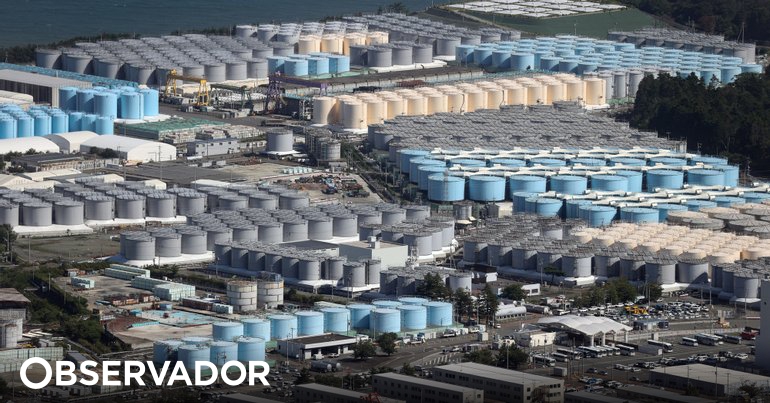
The head of the UN nuclear agency observed, this Wednesday, the process of discharging contaminated waters from the Japanese Fukushima nuclear plant into the Pacific Ocean and referred to an “encouraging start”.
On a visit to Japan that began on Tuesday, the director general of the International Atomic Energy Agency (IAEA), Rafael Grossi, observed radioactive wastewater being mixed with massive amounts of seawater and examined the station where it is processed. this operation.
The discharges sparked opposition from fishing communities and neighboring countries, including China, which banned all imports of fish and shellfish after the process began from the Fukushima Daiichi nuclear plant (in northeastern Japan), damaged by a violent earthquake. and ‘tsunami’ in 2011.
Grossi’s trip to northeastern Japan takes place on the second of three days of the visit to the Asian country, marked by meetings with members of the Japanese Government and the Tokyo Electric Power Company (TEPCO), the company managing the plant.
During this trip, which also included meetings with local fishermen and students, Grossi analyzed the water exit channel, connected to an underground tube that transports it to the exit area in the Pacific Ocean, one kilometer from the coast, and explained the process prior dilution with sea water.
“By overseeing this operation and providing information about it, we ensure, as we have stated from the beginning, that the IAEA will be present until the last drop is dispersed safely into the ocean”said Grossi in a video published on the social network X (formerly Twitter).
“Nuclear safety comes first. The IAEA is here and we will continuously monitor this operation,” she added.
Before visiting the facilities of the Fukushima nuclear power plant, the director general of the IAEA held a meeting in the town of Iwaki with associations and groups of fishermen in the region, who contest the process used due to the impact on the fishing sector and its products.
In response, Grossi assured that the IAEA “independently monitors water discharge from the plant, analyzing water, fish and sediments”. “So far, the results show that tritium [isótopo radioativo de hidrogénio] is far below the limits. Transparency, accuracy and dialogue will be key throughout the process,” she added.
Grossi also held a conversation with students from the Fukushima region, during which he highlighted the importance of the organization he heads for future generations. “Your questions about water discharge and other nuclear energy issues emphasize the value of the IAEA’s commitment,” he noted.
TEPCO is discharging more than 1.32 million tons of water contaminated with radioisotopes into the Pacific Ocean, after being processed to remove the majority of this highly radioactive material and diluted in seawater, a process that will continue for several decades .
The Japanese government, the plant operator and the Japanese nuclear regulator opted for discharge into the ocean as the best way to solve the problem of temporary storage of the liquid inside nuclear facilities, and after rejecting other alternatives due to their technical complexity or higher costs high.
This option has drawn criticism from neighboring countries, particularly China, despite being supervised by the IAEA, which considers the Japanese plan to be in line with the sector’s safety standards and ensures that these “gradual and controlled” discharges will have an “insignificant” radiological impact. ” in people and the environment.
Source: https://observador.pt/2024/03/13/chefe-da-aiea-diz-que-descargas-da-central-nuclear-de-fukushima-para-o-pacifico-sao-seguras/

